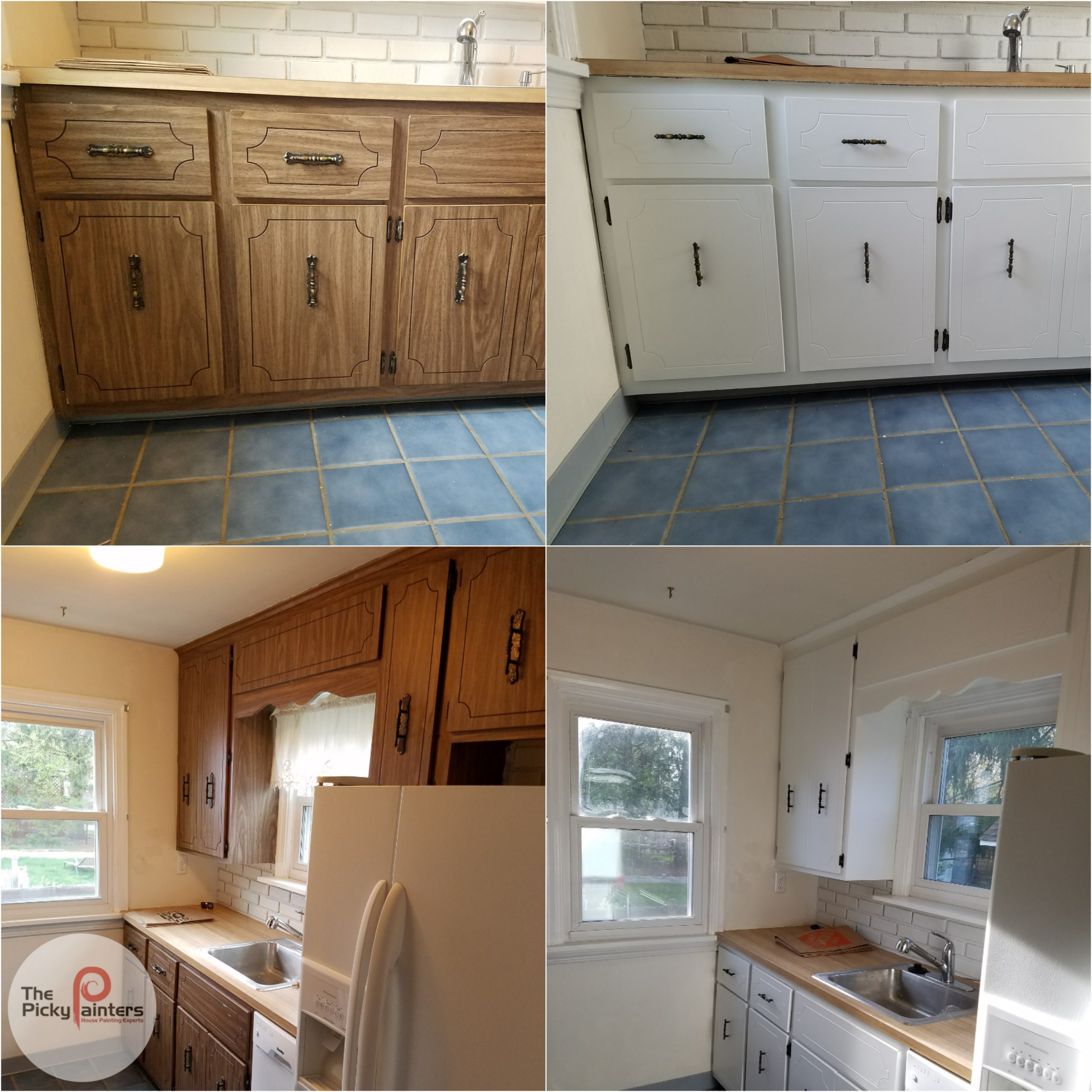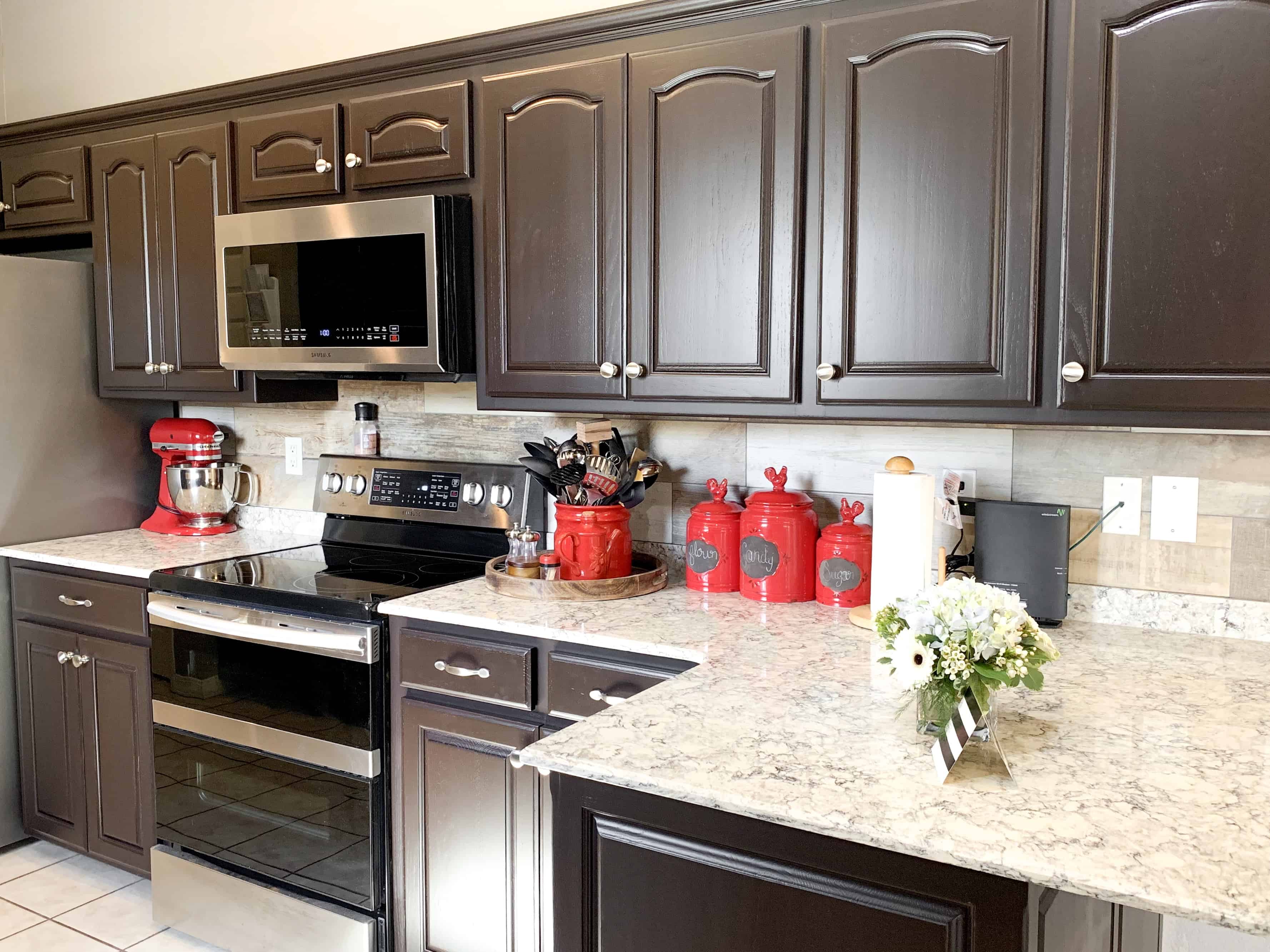Applying and Finishing Chalk Paint on Laminate Cabinets

The transformation of your laminate kitchen cabinets awaits! This section delves into the crucial steps of applying chalk paint and achieving a flawless, durable finish. We will explore various application techniques, emphasizing the importance of precision and patience for a professional outcome. Remember, the devil is in the details, and these details will determine the longevity and beauty of your refreshed cabinets.
Chalk Paint Application Methods
Choosing the right application method is paramount. Each technique offers unique advantages and challenges, influencing the final appearance and the overall effort required. Brushing provides control, rolling offers speed, and spraying ensures a seamless finish, but each demands a different level of skill and preparation.
- Brushing: This method allows for maximum control, ideal for detailed work and achieving a textured, slightly distressed look.
- Step 1: Apply a thin, even coat of primer specifically designed for laminate surfaces. The primer should appear as a uniform, milky white layer, completely covering the existing laminate. (Image Description: A cabinet door showing a completely coated, evenly distributed layer of white primer, free of streaks or clumps.)
- Step 2: Using a high-quality, angled brush, apply a thin coat of chalk paint, working in the direction of the wood grain (if visible). Avoid overloading the brush to prevent drips and uneven coverage. (Image Description: A close-up shot showing the brush applying a thin, even coat of chalk paint; the paint appears smooth and consistent, with no visible brush strokes.)
- Step 3: Allow the paint to dry completely according to the manufacturer’s instructions. (Image Description: A cabinet door showing a fully dried, matte finish; the paint should be uniformly colored and free of any wet spots.)
- Step 4: Repeat steps 2 and 3 for subsequent coats until desired opacity is achieved. (Image Description: A series of images showing the cabinet door after each coat, illustrating the gradual build-up of color and opacity.)
- Rolling: Faster than brushing, rolling is suitable for large, flat surfaces, offering a smoother finish.
- Step 1: Prime the cabinets as described above. (Image Description: Same as Step 1 under Brushing.)
- Step 2: Use a high-quality foam roller with a short nap to apply a thin, even coat of chalk paint. Avoid over-rolling. (Image Description: A cabinet door showing an even coat of paint applied with a roller; the finish appears smooth, with minimal texture.)
- Step 3: Allow to dry completely. (Image Description: Same as Step 3 under Brushing.)
- Step 4: Repeat as needed. (Image Description: Same as Step 4 under Brushing.)
- Spraying: Provides the smoothest, most even finish, but requires specialized equipment and proper ventilation.
- Step 1: Prime the cabinets as described above. (Image Description: Same as Step 1 under Brushing.)
- Step 2: Thin the chalk paint according to the manufacturer’s recommendations for spraying. Apply several light coats, allowing each to dry before applying the next. (Image Description: A cabinet door showing a smooth, even coat of paint, free of any runs or drips. The finish appears almost flawless.)
- Step 3: Allow to dry completely. (Image Description: Same as Step 3 under Brushing.)
- Step 4: Repeat as needed. (Image Description: Same as Step 4 under Brushing.)
The Importance of Thin Coats and Drying Time
Thin coats are crucial. Thick coats lead to cracking and peeling, jeopardizing the entire project. Under-drying results in a sticky, tacky surface prone to smudging, while over-drying can cause the paint to become brittle and chip easily. (Image Description: A comparison image; one cabinet door showing cracks and peeling from thick coats, another showing a sticky, tacky surface from under-drying, and a third displaying a smooth, properly dried finish.)
Sealing Techniques for Chalk Paint on Laminate
Proper sealing is the final, vital step, ensuring durability and longevity. Several options exist, each offering a unique balance of protection, appearance, and ease of use.
- Wax: Provides a soft, slightly matte finish, easy to apply but less durable than other options. Offers a vintage, slightly rustic look.
- Sealant: Offers superior protection compared to wax, providing a harder, more durable finish. Comes in various sheens, from matte to gloss. Generally more resistant to scratches and wear.
- Topcoats: Similar to sealants, topcoats offer excellent protection and durability. Polyurethane topcoats are a popular choice for their resistance to moisture and wear. A variety of sheens are available, allowing for customization.
Troubleshooting and Addressing Common Issues: Chalk Paint On Laminate Kitchen Cabinets

The transformation of your laminate kitchen cabinets with chalk paint can be a rewarding experience, but unforeseen challenges may arise. Understanding these potential pitfalls and knowing how to address them is crucial for achieving a flawless, long-lasting finish. This section will equip you with the knowledge to conquer any painting obstacles and reveal the stunning beauty of your newly painted cabinets.
Chalk paint on laminate kitchen cabinets – Painting laminate presents unique difficulties compared to traditional wood surfaces. The non-porous nature of laminate means paint adhesion can be tricky, leading to issues like chipping, peeling, and uneven color. Proper preparation is paramount, and even with meticulous work, some problems may occur. Fear not, for solutions exist to rectify these common issues and restore your project to its intended glory.
Chipping
Chipping is a frustrating problem that often occurs when the paint lacks sufficient adhesion to the laminate surface. This is typically caused by inadequate surface preparation – a failure to properly clean, prime, or sand the laminate before applying the chalk paint. The paint, lacking a strong bond, will fracture and break away under stress, revealing the laminate beneath. To prevent chipping, ensure you thoroughly clean the cabinets with a degreaser, apply a high-quality bonding primer designed for laminate, and lightly sand between coats to create a slightly rough surface for better paint grip. If chipping occurs, carefully remove the loose pieces of paint, re-prime the affected area, and repaint. Remember, patience and meticulous preparation are your allies in this battle against chipping.
Peeling
Peeling paint is often a symptom of insufficient adhesion, similar to chipping, but it manifests as larger flakes or sheets of paint separating from the surface. This usually happens when the paint is applied too thickly, or when the underlying surface was not properly prepared. A visible separation of the paint from the laminate is a tell-tale sign. To remedy peeling, carefully remove the loose paint using a scraper or putty knife. Thoroughly clean the area, apply a bonding primer, and repaint with thinner coats, allowing each layer to dry completely before applying the next. This layered approach ensures better adhesion and prevents future peeling episodes. Remember, thin coats are better than thick coats for lasting results.
Uneven Color, Chalk paint on laminate kitchen cabinets
An uneven color is a visual disappointment that can result from several factors. Inconsistent application, insufficient coats, or using a paint that doesn’t provide adequate coverage are common culprits. The unevenness may appear as patches of lighter or darker color, or streaks across the surface. To address uneven color, ensure you use a high-quality chalk paint known for its good coverage. Apply multiple thin coats, allowing each to dry completely before the next. Consider using a high-quality paintbrush or roller for a smoother application. If the unevenness persists after multiple coats, you may need to lightly sand the surface between coats to create a more even base for the paint. Patience and multiple thin coats are key to a uniform, captivating finish.
